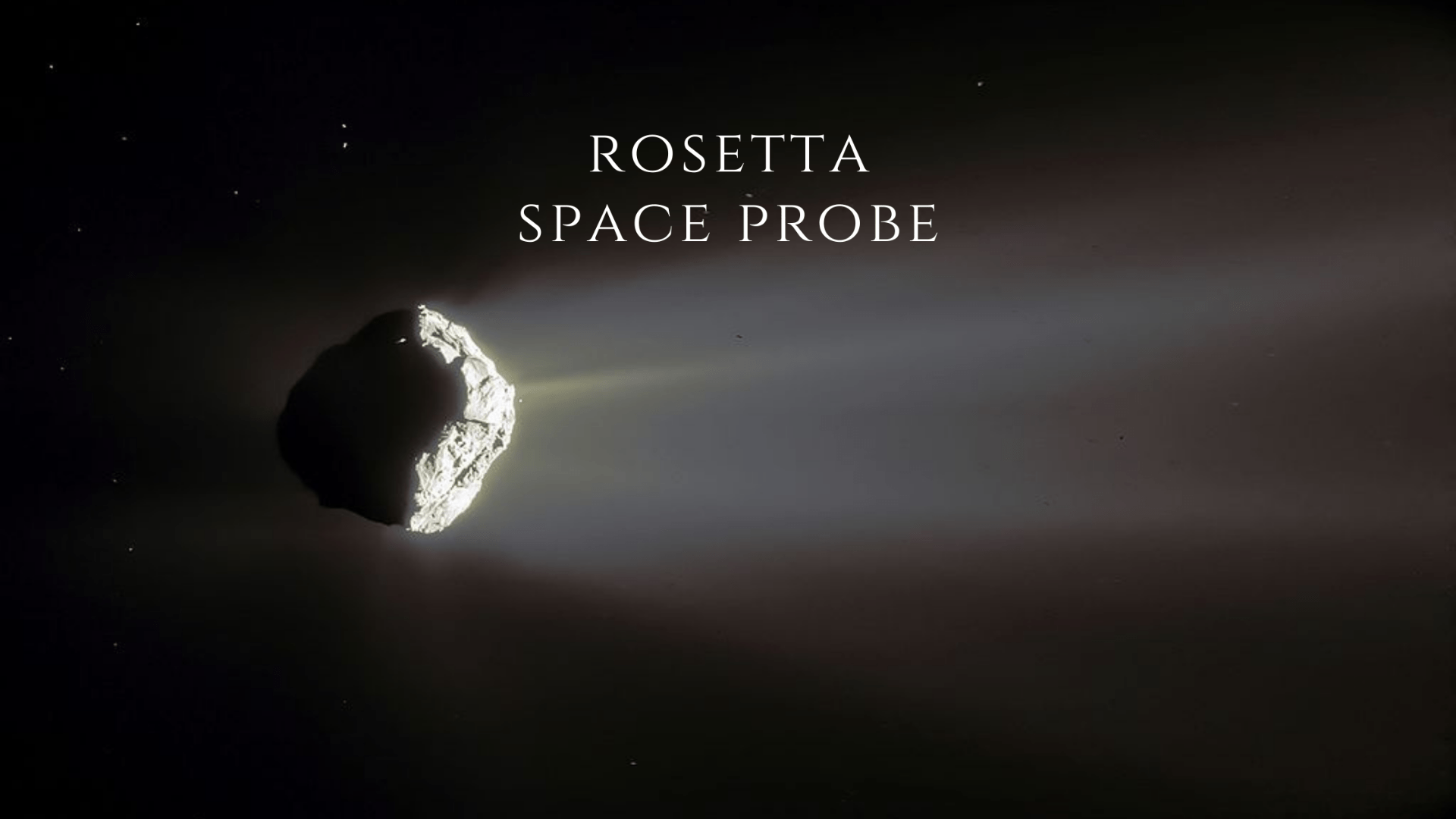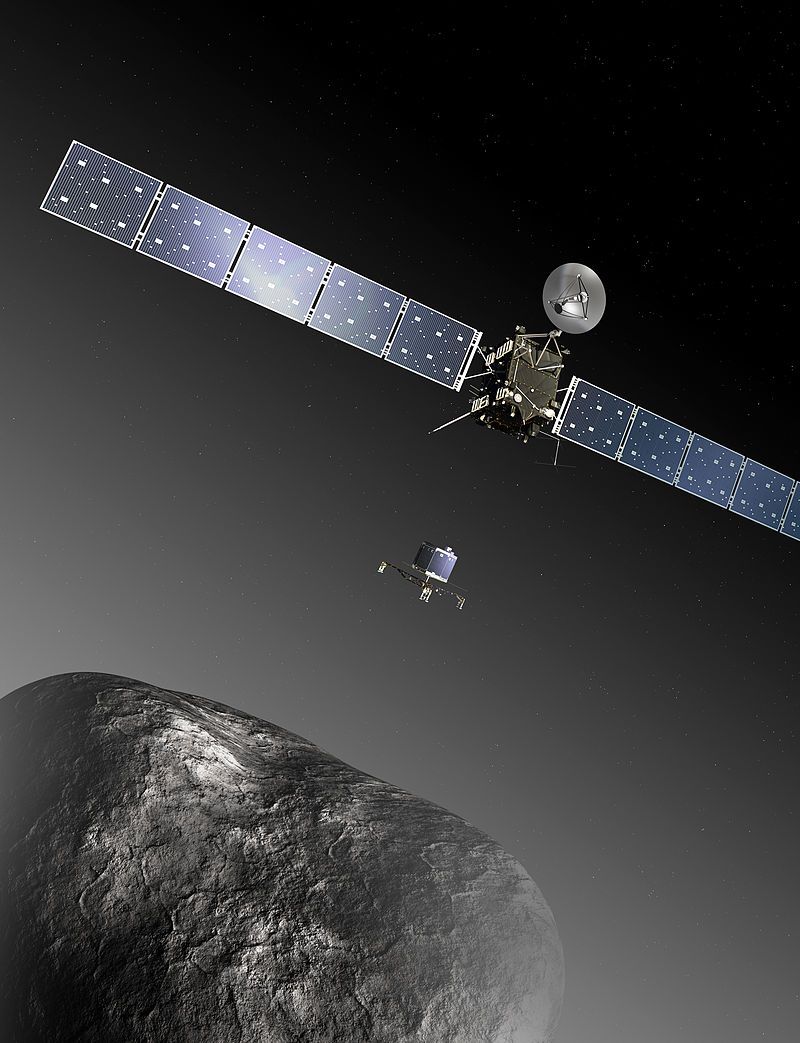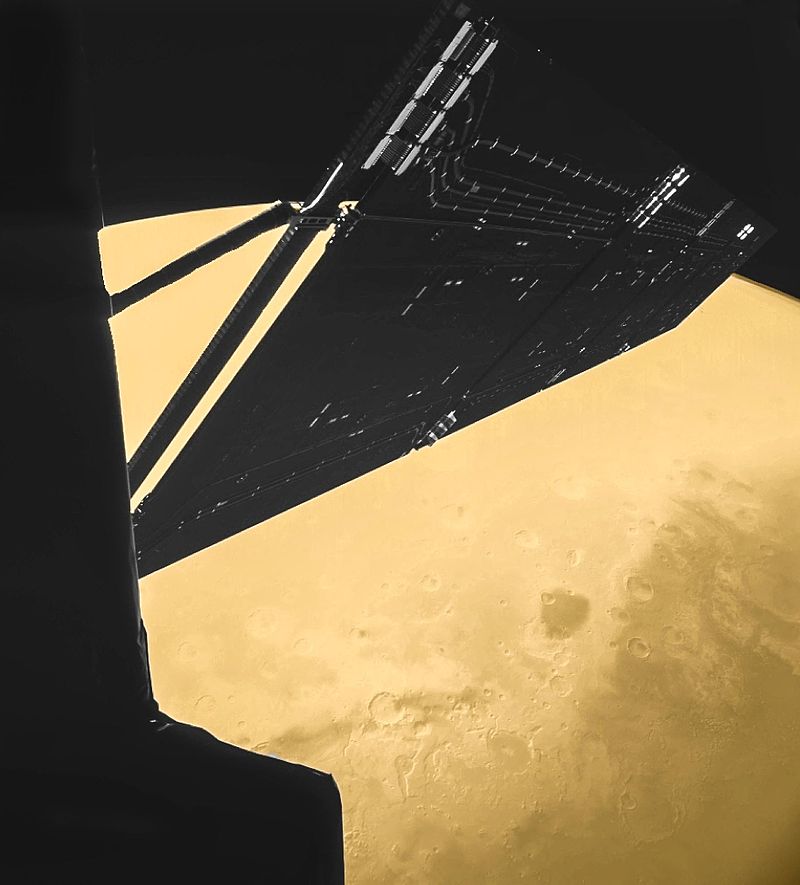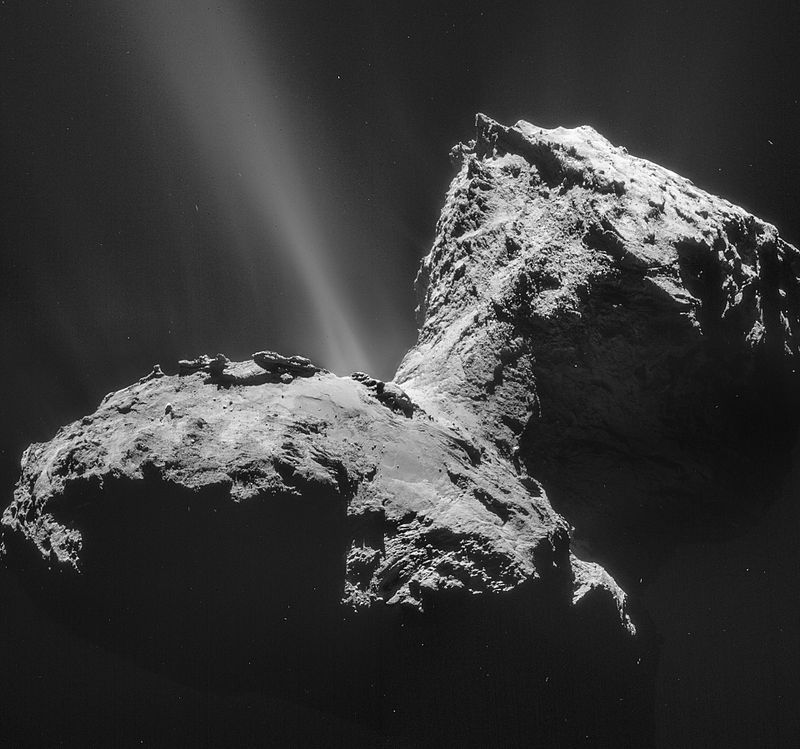
Rosetta Space Probe

Rosetta was a space probe built by the ESA that launched on March 2, 2004, as a cornerstone of the ESA's Horizon 2000 program. Along with the Philae lander module, Rosetta performed a detailed study of comet 67P/Churyumov–Gerasimenko and performed flybys of Mars, Earth, and the asteroids 2867 Šteins and 21 Lutetia while journeying through space.
On March 2, 2004, Rosetta was launched on an Ariane 5 rocket from the Guiana Space Centre in Kourou, French Guiana. In order to achieve the velocity required to reach 67P, Rosetta used gravity assist maneuvers from Earth and Mars to accelerate throughout the inner Solar System. The spacecraft performed a flyby of asteroid 2867 Šteins on September 5, 2008, and on July 10, 2010, Rosetta flew by 21 Lutetia, a large main-belt asteroid.

Rosetta began a series of burns in May 2014, after leaving its hibernation mode in January, as it approached the comet to reduce the relative velocity between the spacecraft and 67P. In August 2014, Rosetta reached comet 67P/Churyumov–Gerasimenko and performed a series of maneuvers that brought it closer to the comet's nucleus, and on September 10, 2014, the spacecraft entered orbit about 67P.
67P's surface layout was unknown before Rosetta's arrival, and the orbiter mapped the comet in anticipation of detaching its lander. By August 25, 2014, five potential landing sites had been determined. On September 15, 2014, ESA announced Site J, named Agilkia, was chosen as the lander's destination. The lander Philae detached from Rosetta on November 12, 2014, initially landed on 67P, then bounced twice and came to a rest. After bouncing, Philae came to a stop in the shadow of a cliff, which made it unable to gather solar power. Philae lost contact with Rosetta when its batteries ran out after two days, before most planned science objectives could be attempted. Contact was intermittently and briefly reestablished several months later before contact was lost again. There was no communication afterward, and the transmitter to communicate with Philae was switched off in July 2016 to reduce the power consumption of the probe.

The Rosetta mission achieved many notable firsts. Rosetta passed through the main asteroid belt on its way to comet 67P, ensuring the first European close encounter with the asteroid belt objects. Rosetta was also the first spacecraft to fly close to Jupiter's orbit using solar cells as its primary power source. Rosetta became the first spacecraft to fly alongside a comet as it headed towards the inner Solar System and the first spacecraft to examine the activity of a frozen comet as it is warmed by the Sun at close proximity. Rosetta's lander Philae had the first controlled touchdown on a comet nucleus. The lander's instruments captured the first images from a comet's surface and made the first in situ analysis of its composition.
